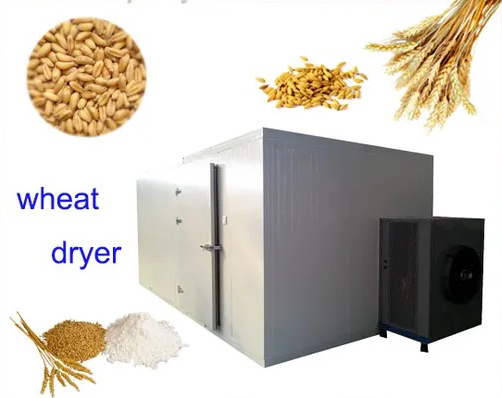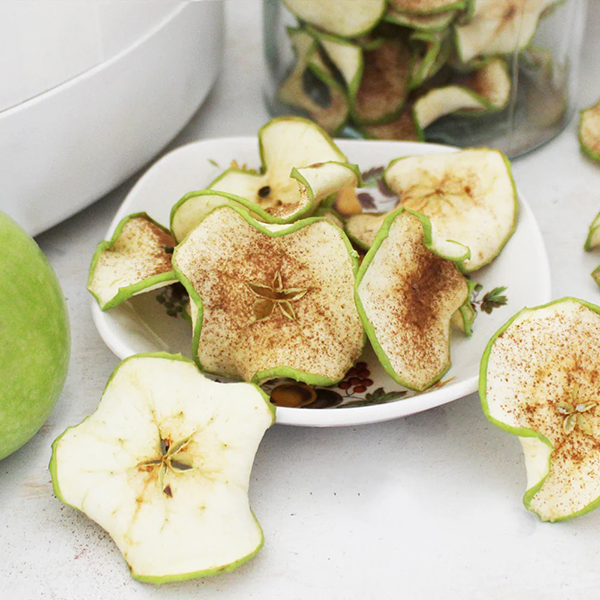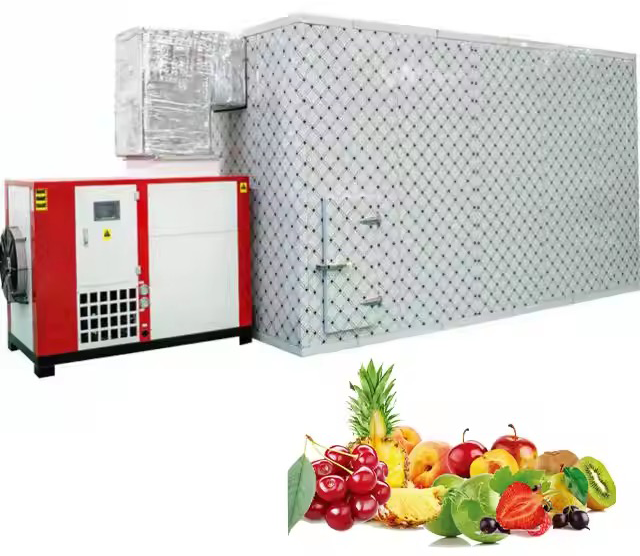
Content Menu
● Understanding Heat Pump Dryers
● How Heat Pump Dryers Work
● Pros of Heat Pump Dryers
● Cons of Heat Pump Dryers
● Applications in Food Processing
● Comparative Analysis with Other Drying Methods
● Health Benefits of Dehydrated Foods
● Choosing the Right Heat Pump Dryer
● Conclusion
● FAQ
>> 1. What is a heat pump dryer?
>> 2. How does a heat pump dryer differ from traditional dryers?
>> 3. What types of foods can be dried using heat pump technology?
>> 4. Are heat pump dryers environmentally friendly?
>> 5. What are the maintenance requirements for heat pump dryers?
● Citations:
In the realm of food processing, the efficiency and effectiveness of drying methods play a crucial role in preserving food quality and extending shelf life. Among various drying technologies, heat pump dryers have emerged as a popular choice for both commercial and industrial applications. This article will explore the advantages and disadvantages of heat pump dryers, particularly in the context of food dehydration.

Understanding Heat Pump Dryers
Heat pump dryers utilize a closed-loop system that recycles air to remove moisture from food products. Unlike conventional dryers that vent hot air outside, heat pump dryers maintain a controlled environment by reusing heated air, making them energy-efficient and environmentally friendly.
How Heat Pump Dryers Work
The operation of a heat pump dryer can be summarized in the following steps:
1. Air Intake: The dryer draws in ambient air.
2. Heat Exchange: The air passes through an evaporator where it absorbs moisture from the food being dried.
3. Heating: The moisture-laden air is then compressed to increase its temperature before being circulated back into the drying chamber.
4. Dehumidification: The humid air is cooled in a condenser, allowing moisture to condense and be collected.
5. Recirculation: The now-dry air is reheated and returned to the drying chamber to continue the drying process.
This cycle allows for efficient moisture removal while maintaining low energy consumption levels.
Pros of Heat Pump Dryers
- Energy Efficiency: Heat pump dryers are significantly more energy-efficient than traditional dryers, using up to 70% less energy. This efficiency translates into lower operational costs, making them an attractive option for businesses looking to reduce expenses.
- Gentle Drying Process: The lower operating temperatures help preserve the nutritional value, color, and texture of food products. This is particularly important for high-value items such as fruits and vegetables.
- Environmentally Friendly: By minimizing energy consumption and reducing greenhouse gas emissions, heat pump dryers contribute to more sustainable food processing practices.
- Versatility: These dryers can handle a wide range of products, including fruits, vegetables, herbs, meats, and seafood. Their adaptability makes them suitable for various applications within the food industry.
- Reduced Risk of Over-Drying: The precise control over temperature and humidity levels helps prevent over-drying, which can lead to loss of flavor and nutrients.
Cons of Heat Pump Dryers
- Longer Drying Times: While heat pump dryers are efficient, they typically require longer drying times compared to conventional methods. This may not be ideal for businesses that prioritize speed.
- Higher Initial Investment: The upfront cost of purchasing a heat pump dryer can be higher than traditional models. However, this cost can be offset by long-term savings on energy bills.
- Maintenance Requirements: Regular maintenance is necessary to keep heat pump systems operating efficiently. This includes cleaning filters and ensuring that components are functioning correctly.
- Limited Capacity: Some models may have a smaller drying capacity compared to conventional dryers. Businesses with high-volume needs may need multiple units or larger models.

Applications in Food Processing
Heat pump dryers are particularly effective in various food processing applications:
- Fruits and Vegetables: They maintain color and flavor while effectively removing moisture from products like apples, mangoes, tomatoes, and herbs.
- Meat Products: Heat pump technology is suitable for dehydrating meats while preserving texture and taste.
- Seafood: Fish and shrimp can be dried without compromising quality, making them ideal for long-term storage or snack production.
Comparative Analysis with Other Drying Methods
To better understand the advantages of heat pump dryers, it's helpful to compare them with other common drying methods:
| Feature | Heat Pump Dryer | Conventional Dryer | Dehydrator |
| Energy Efficiency | High (up to 70% less) | Moderate | High |
| Drying Temperature | Low (gentle on foods) | High | Low |
| Drying Time | Longer | Shorter | Varies |
| Nutrient Preservation | Excellent | Fair | Excellent |
| Versatility | High (variety of foods) | Limited | High |
This table highlights how heat pump dryers excel in energy efficiency and nutrient preservation compared to conventional methods while matching dehydrators in versatility.
Health Benefits of Dehydrated Foods
Dehydrating foods not only extends their shelf life but also offers several health benefits:
- Nutrient Retention: Dehydration helps retain vitamins and minerals that might be lost through other preservation methods like canning or freezing.
- Reduced Additives: Home dehydration eliminates the need for preservatives commonly found in store-bought dried foods.
- Flavor Concentration: As moisture is removed, flavors become more concentrated, leading to richer taste profiles in foods like fruits and jerky.
Choosing the Right Heat Pump Dryer
When selecting a heat pump dryer for your food processing needs, consider the following factors:
- Capacity: Ensure the dryer can handle your production volume without compromising quality.
- Temperature Control: Look for models with adjustable temperature settings to accommodate different types of foods.
- Energy Consumption Ratings: Opt for units with high energy efficiency ratings to maximize savings over time.
- Maintenance Needs: Choose a model that offers easy access for cleaning and maintenance tasks.
Conclusion
In conclusion, heat pump dryers present a modern solution for food dehydration with numerous benefits that outweigh their drawbacks. Their energy efficiency, gentle drying process, versatility, and ability to preserve nutrients make them an excellent investment for businesses focused on sustainability and quality preservation in food processing. However, potential buyers should weigh the initial costs against long-term savings and consider their specific operational needs before making a decision.

FAQ
1. What is a heat pump dryer?
A heat pump dryer is an appliance that uses a closed-loop system to recycle hot air for drying purposes. It efficiently removes moisture from food without venting hot air outside.
2. How does a heat pump dryer differ from traditional dryers?
Unlike traditional dryers that expel hot air outside, heat pump dryers recirculate warm air within the unit, making them more energy-efficient and gentle on food products.
3. What types of foods can be dried using heat pump technology?
Heat pump dryers can effectively dry a variety of foods including fruits, vegetables, meats, seafood, herbs, and spices while preserving their nutritional value.
4. Are heat pump dryers environmentally friendly?
Yes, they are considered environmentally friendly due to their reduced energy consumption and lower greenhouse gas emissions compared to conventional drying methods.
5. What are the maintenance requirements for heat pump dryers?
Regular maintenance includes cleaning filters and ensuring all components are functioning properly to maintain optimal performance.
Citations:
[1] https://www.webstaurantstore.com/guide/741/food-dehydrators-buying-guide.html
[2] https://www.healthline.com/nutrition/dehydrated-food
[3] http://sciencebeingjournal.com/sites/default/files/Octa%20J.%20Biosci.%20Vol.%2010%20(2)124-133_0.pdf
[4] https://thruhikers.co/dehydrators/
[5] https://elephantenergy.com/heat-pump-dryer-vs-electric-dryer-whats-right-for-you/
[6] https://www.bestbuy.com/discover-learn/10-reasons-to-buy-a-food-dehydrator/pcmcat1634332391134
[7] https://extension.umn.edu/preserving-and-preparing/drying-food
[8] https://www.youtube.com/watch?v=wVypalh7Mrg
[9] https://www.lowes.com/n/buying-guide/best-food-dehydrator-buying-guide
[10] https://airtekdehydrator.com/health-advantages-using-food-dehydrator/











